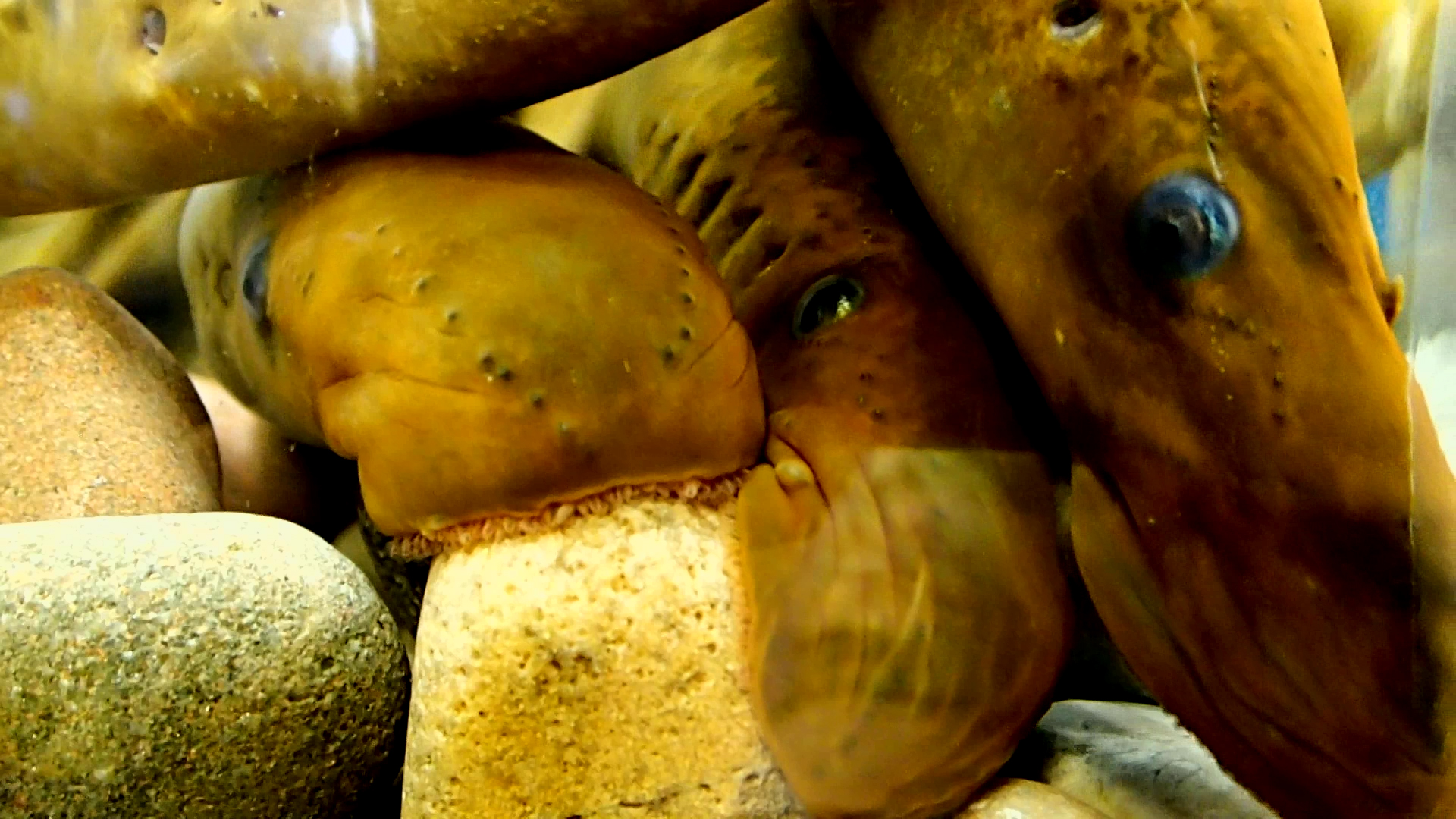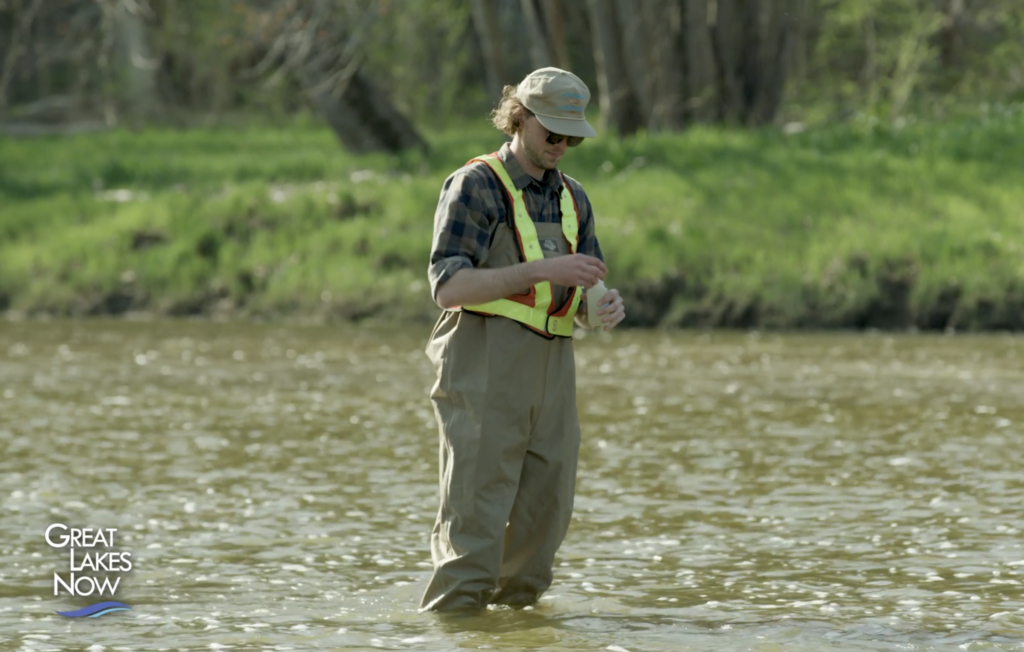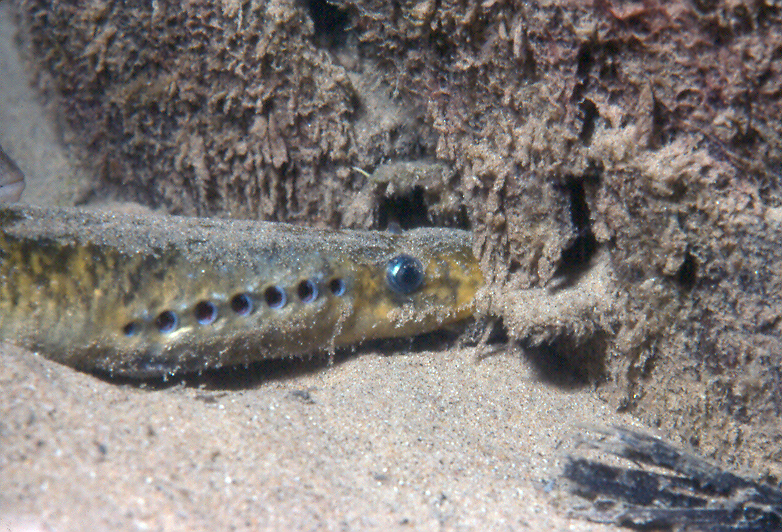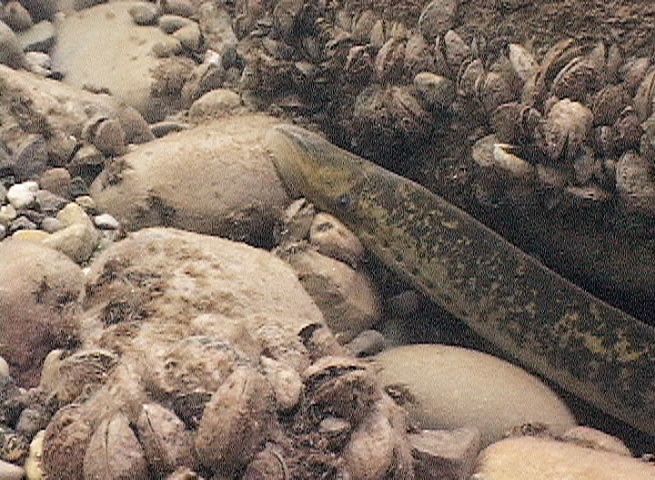
After 100 years of coordinated effort, 98% of all the sea lamprey in the Great Lakes have been eliminated, according to the Great Lakes Fishery Commission, the organization tasked with the management of the invasive species within the basin.
Unfortunately, the remaining 2% is enough to start the cycle all over again if left unchecked, and current technology “does not make complete eradication possible,” said Marc Gaden, the Great Lakes Fishery Commission communications director and legislative liaison.
Researchers at the Royal Ontario Museum in Toronto agree it is unlikely that every single sea lamprey can be eliminated from the Great Lakes.
“Chasing after that last mating pair of lamprey, even if it were possible, it would be incredibly difficult and expensive,” Gaden said.
In 1955, when Canada and the United States established the Great Lakes Fishery Commission to manage the sea lamprey invasion, reaching 98% removal was inconceivable. At the time, sea lamprey were decimating the Great Lakes fishery and the Commission was tasked with finding ways to slow them down or limit their numbers.
Since that time, billions have been invested in research and management efforts. By developing and implementing a variety of control methods, the Commission has not only kept the invasive sea lamprey under control but has virtually eliminated them from the Great Lakes altogether and new control technologies may one day provide the ability to finish off the last 2%.
The GLFC has an interactive online tool that can show the status of sea lamprey populations in each lake by year.
Lampricide
Developing a chemical control agent that would be harmful to sea lamprey but non-lethal to native species was one of the first objectives of the Great Lakes Fishery Commission.
“It’s easy to kill fish, but it’s really hard to kill just the fish that you’re after,” Gaden said.
Lampricide is now the primary tool used to control sea lamprey in the Great Lakes. The manmade pesticide was first tested in Lake Superior in 1958. By 1986, it was being utilized in tributaries throughout all five Great Lakes, according to an article in the Journal of Great Lakes Research.
Watch Great Lakes Now‘s segment on lamprey control here:
The lampricide 3-trifluoromethyl-4-nitrophenol (TFM) targets sea lamprey larvae in their nursery habitat with the goal of keeping them from reaching adulthood. Gaden said about 120 Great Lakes tributaries are treated on a rotating basis with lampricides.
Sea lamprey producing streams do not need to be treated every year with lampricide.
“When we treat a stream, we kill about three or four year classes at once, then we don’t have to come back to that stream again for several years,” Gaden said.
TFM is lethal to sea lamprey because they have low levels of the enzymes needed to eliminate the chemical from their bodies. Other organisms are generally unaffected by TFM, according to the Great Lakes Fishery Commission website. Bayluscide is a newer, less costly additive that is used during some treatments to reduce the amount of TFM needed.
Not all stakeholders are comfortable with the broad application of pesticides into the Great Lakes watershed.
In the late 1990s, lake sturgeon advocates raised concerns about the impact of lampricide on larval sturgeon. Lake sturgeon utilize the same spawning habitat as sea lamprey, and the two species spawn at the same time of year.
In response to these concerns, a new set of lampricide application guidelines called the Sturgeon Protocol were established. As part of the Sturgeon Protocol criteria, the application of lampricide is restricted in rivers where lake sturgeon spawn.
“We take steps to protect sturgeon stock, and we take that very seriously,” Gaden said.
Many environmental groups also oppose the use of lampricide. A current petition on change.org calls for a moratorium on lampricide treatments in Vermont to protect mudpuppies.
Mudpuppies are an aquatic salamander, often referred to as bio-indicators because of their sensitivity to pollutants. In 2016, the Michigan Department of Natural Resources added mudpuppy to the species of concern list due to decreasing populations. Mudpuppies are one of the native species that is vulnerable to lampricide.
Gaden said the commission understands the public’s concern regarding the collateral damage caused by the use of pesticides in the Great Lakes. He said the commission is continuingly funding research into alternative methods to reduce the amount of lampricide used each year.
“It’s our goal to not rely solely on a pesticide for sure,” Gaden said. He said successful management, “relies on several techniques working together as opposed to putting all your eggs in one basket.”

A team member with the U.S. Fish and Wildlife Service tests the water in Ohio’s Grand River before treating it with lampricide, a chemical that targets sea lamprey larvae. (Photo Credit: Great Lakes Now)
Physical barriers
Physical barriers like dams were the first control measures used to manage the sea lamprey invasion. These early barriers had several flaws. In addition to limiting river access for desirable native species, they were not always effective in stopping sea lamprey. During spring flooding events, the lamprey can sometimes bypass the dams.
“If your barrier is letting some pass, it’s not all that effective,” Gaden said.
Barriers continue to play an important role in sea lamprey management, Gaden said. But modern designs such as low-head dams allow jumping fish to pass while limiting access for sea lamprey. Fish ladders are tiered passages that also permit jumping fish to move upstream while limiting lamprey.
Unfortunately, these barriers also restrict the ability of non-jumping native fish species to move upstream.
In some locations, trap-and-sort fishways are used to help non-jumping fish. But trapping and moving fish are labor intensive processes reserved for select species.
“It’s not optimal, but there are some cases where we will physically move the real important fish,” Gaden said.

Sea lamprey (Photo Credit: Greg Lashbrook / PolkaDot Perch)
Physical barriers like dams are a conundrum for fisheries and invasives managers. Barriers disrupt river connectivity, which is detrimental for many native species. Dams do provide some financial incentives. Gaden said barriers are cost effective because a one-time building expenditure can provide 50 to 100 years of protection. They also significantly reduce the amount of lampricide needed each year.
Thousands of dams across the Great Lakes basin have eliminated the need to apply lampricide in thousands of miles of tributaries, though the increasing popularity and benefits of dam removal could put that in danger.
“If we had to treat all the streams in the Great Lakes Basin, we basically could not afford to do it,” he said.
Biopesticides
One form of sea lamprey control utilizes pheromones and natural alarm cues. These natural compounds are categorized as biopesticides, which the U.S. EPA considers less toxic to the environment.
When spawning, lamprey release pheromones that attract other adults to the nest site. While “alarm cues emanate from dead or injured sea lampreys and warn other sea lamprey of impending danger, causing a flight response,” according to the Great Lakes Fishery Commission website.
“We’ve invested a lot of time and considerable dollars in developing this,” Gaden said. “And we do have pheromones now that are registered with the EPA as a biopesticide.”
Potentially, a push-pull application may prove helpful in controlling sea lamprey movements. Pheromones and alarm cues could be used to lure adult sea lamprey into traps, drive them away from unsuitable spawning habitat, move them into areas that are easy to treat with lampricides, or repel them from areas where control tactics are difficult to implement.
Genetics

Sea lamprey and zebra mussels (Photo Credit: Greg Lashbrook / PolkaDot Perch)
Genetic research has made the previously unthinkable prospect of a sea lamprey-free Great Lakes possible but would require a significant investment of time, resources and public support.
“We’re talking about millions of dollars of R&D and probably a 20-year commitment,” Gaden said. “We don’t obviously embark on it lightly and without thinking through completely where we’re going.”
Researchers know gene-editing lamprey is possible.
An example of genetic manipulation would be to alter the sea lamprey genetic code so they only produce male offspring but no females. Without any reproducing females, the population would eventually die off.
“We have a lot of questions to ask, both from the science perspective about where you go, where you invest your money in this research, but also on the ethical side of it,” Gaden said. “Because any time that you’re dealing with genetic manipulation there are the ethical questions as well that you have to work through.”
After more than 100 years, ongoing research and new technology may one day provide the ability to completely eliminate all sea lamprey from the Great lakes and with them, the need to apply pesticides.
“It’s only limited by the imagination of engineers and biologists,” Gaden said.
Correction: A previous version of this story misquoted the amount of money Great Lakes Fishery Commission Communications Director Marc Gaden estimated for the cost of research into gene editing.
Catch more news on Great Lakes Now:
Genetic Engineering: Researchers take first steps toward controlling sea lamprey
Complete Eradication: Researchers look at removing sea lamprey from the Great Lakes
Featured image: Invasive sea lamprey (Photo Credit: Great Lakes Now)




